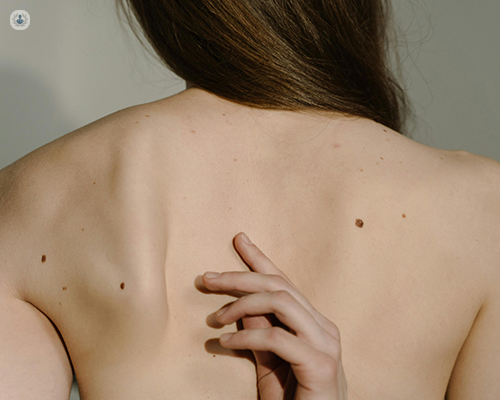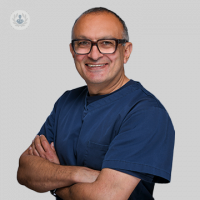What is seborrhoeic keratosis?
Written in association with:Seborrhoeic keratosis is a common skin condition, characterised by the appearance of raised scaly patches, that often raises questions and concerns about skin health.
Dr Bav Shergill, renowned consultant dermatologist, provides an expert insight into what seborrhoeic keratosis is, what contributes to its development, and when treatment may be necessary.

What is seborrhoeic keratosis?
Seborrhoeic keratosis are benign (non-cancerous) skin growths that typically appear as raised, scaly patches on the skin. These growths can vary significantly in colour, ranging from light tan to black, and they often have a waxy, "stuck-on" appearance. The texture may feel rough, and the growths may appear flat or raised.
Seborrhoeic keratosis tends to increase in frequency with age, with a greater prevalence among people over the age of 40. The growths can be found on various parts of the body, including the face, chest, back, and scalp.
What causes seborrhoeic keratosis?
The exact cause of seborrhoeic keratosis is still unknown, but it’s believed to be related to a combination of genetic and environmental factors. Research suggests that there may be a hereditary component, meaning people with a family history of these growths are more likely to develop them.
Sun exposure is also thought to be a contributing factor. While the condition isn’t directly caused by sun exposure, ultraviolet (UV) light can contribute to the growth of these lesions, particularly in people with fair skin.
Additionally, seborrhoeic keratosis is more common in people with certain skin types and conditions. For example, people with oily skin or those who have other skin conditions, such as acne or eczema, may be at a higher risk for developing these growths.
Does seborrhoeic keratosis require treatment?
Seborrhoeic keratosis doesn’t typically require treatment, as the growths are benign and usually harmless.
However, treatment may be considered in specific situations. For example, if a seborrhoeic keratosis becomes itchy, irritated, or inflamed, or if it’s located in an area prone to friction (such as under a bra strap), removal may be advisable. Additionally, some people may wish to have seborrhoeic keratosis treated for cosmetic reasons, especially if the growths are prominent or numerous.
If necessary, how is seborrhoeic keratosis removed?
If seborrhoeic keratosis requires removal, several methods are available. The choice of treatment will depend on the size, location, and number of lesions, as well as the patient's overall health and preferences.
Cryotherapy is one of the most common methods. This technique involves freezing the growth with liquid nitrogen, which causes the tissue to die and eventually fall off. Cryotherapy is typically a quick procedure, often performed in the dermatologist's office, and doesn’t require anaesthesia.
Curettage is another effective removal technique. In this procedure, the dermatologist will employ a small, spoon-shaped tool known as a curette to remove the growth by scraping it away. Curettage may be combined with other treatments, such as cryotherapy or electrosurgery, to ensure complete removal.
Laser therapy is an option for people who have multiple seborrhoeic keratoses or who prefer a less invasive approach. This treatment uses focused light energy to target and vaporise the growths, helping minimise damage to the surrounding skin and often resulting in quicker healing times.
Following removal, seborrhoeic keratosis typically heals well. Patients should keep the area clean and avoid sun exposure while it heals.
If you would like to book an appointment with Dr Bav Shergill, head on over to his Top Doctors profile today.


